Let’s get digital with virtual field trips in Spanish class! Teaching Spanish from a classroom with four walls (or now behind a computer screen) makes it challenging for our students to see the Spanish-speaking world. We can take them on local field trips to dance shows, restaurants, or markets, but it just isn’t the same as going to a Spanish-speaking country. So, virtual field trips are our next best bet. With Google Maps, virtual tours of attractions, and YouTube, our possibilities are endless.
Virtual field trips can be done through a few different methods. I have created three types of virtual field trips, and I’m going to break down each of these types for you below. The first style of virtual field trip is a class-wide trip to the same destination. The second type gives students the freedom to choose their destinations and attractions. Finally, the third type of field trip is done using an online scavenger hunt.
1. Class-wide field trip
Let’s say you’re teaching about Peru in Spanish class. Delve into the beautiful Sacred Valley or explore the streets of the capital Lima with your students. You can create a virtual field trip using Google Earth. As the teacher, you design the tour, with an average of 5 stops along the way, written descriptions in the target language about each stop, and questions for students to follow along with.
To create this style of field trip, I recommend using Google Earth, creating a “project,” and adding “features,” which are the stops on the itinerary. Google Earth has a ton of great tools, including allowing you to add your own description of each stop… hello target language and comprehensible input! Plus, you can add images of each stop as well. With Google Earth, students jump right into the map and explore the streets, ruins, or attractions.
Notice that with the samples below, you can focus on one country or attractions around the world or even one specific tourist destination like a museum.
Sample #1 – Peru
You can see on my sample tour below, that my students will take a trip from Cusco to Machu Picchu with many stops along the way. I accompany my field trips with a Google Slides presentation to hold students accountable for what they find and see! They can take screenshots, answer questions, watch videos, and give their opinion.

Sample #2 – The 7 Wonders of the Hispanic World
I plan on taking my Spanish 2 class to 7 Wonders of the Hispanic World through Google Earth this year. Check out this virtual field trip with a built-in scavenger hunt (learn more below)! To add a scavenger hunt, tell your students which building or attraction to jump into. Have them search for something easy to find. For example, at El Museo Guggenheim in Spain, there is an enormous sculpture of a spider. Ask students what animal sculpture is located at the entrance to the museum.
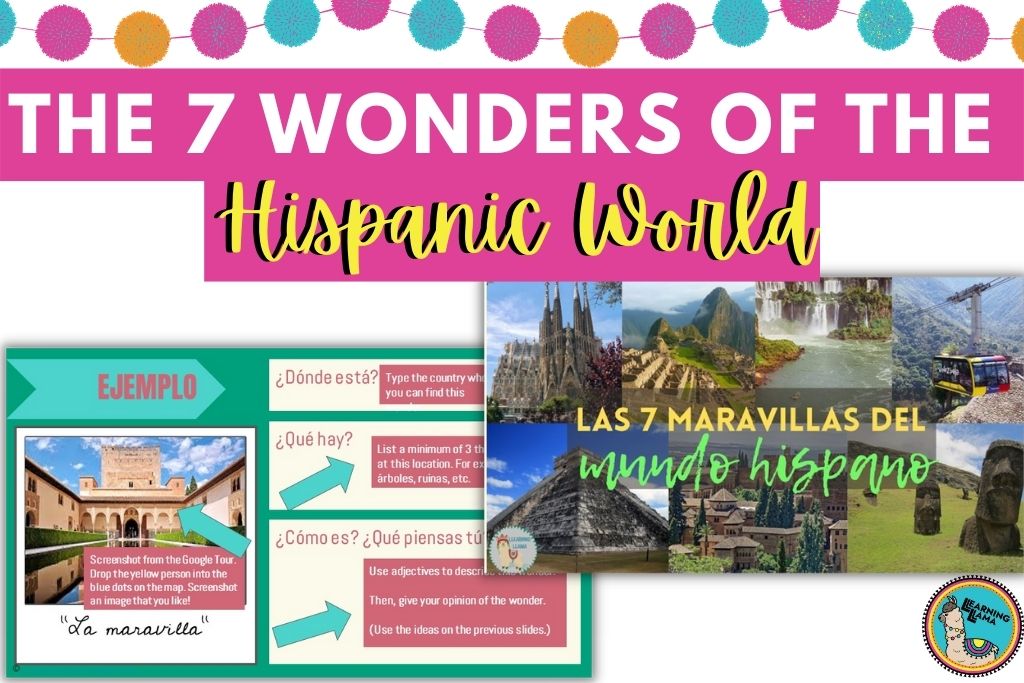
Sample #3 – Costa Rica
Here’s another one… a trip to six fun stops in Costa Rica! This virtual field trip includes short videos to show students what ziplining, painting oxcarts, and more look like. By adding videos, you are adding another element of culture that Google Earth cannot accomplish. Find short clips to enhance each stop so students feel like they are actually participating in activities at each stop. You can embed videos into a Google Slides so students have audio and visuals in addition to your written descriptions.
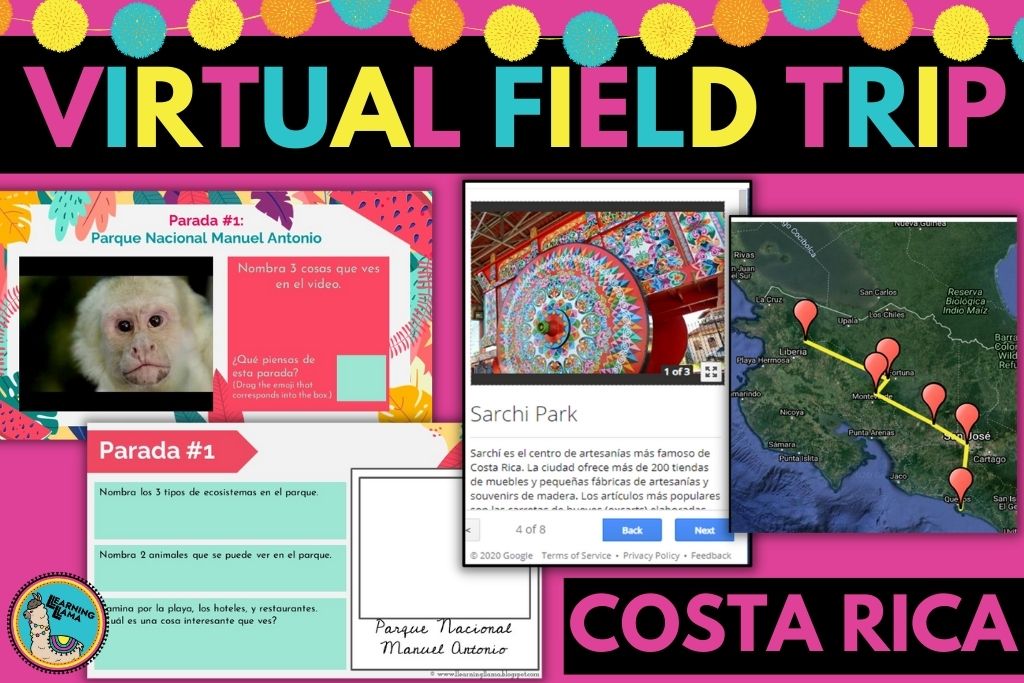
Sample #4 – Frida Kahlo’s La Casa Azul
You don’t have to take a virtual field trip to a country. You can choose one specific attraction. I also use websites of museums or attractions to build interactive field trips. I created one for Frida Kahlo’s La Casa Azul Museum in Mexico. Their website already has a virtual tour, so I designed an interactive Google Slides for students to complete as they “walk” through the museum. You can find zoos, parks, aquariums, art museums, and more that have 360 tours built in already. This is a great alternate to using Google Maps.
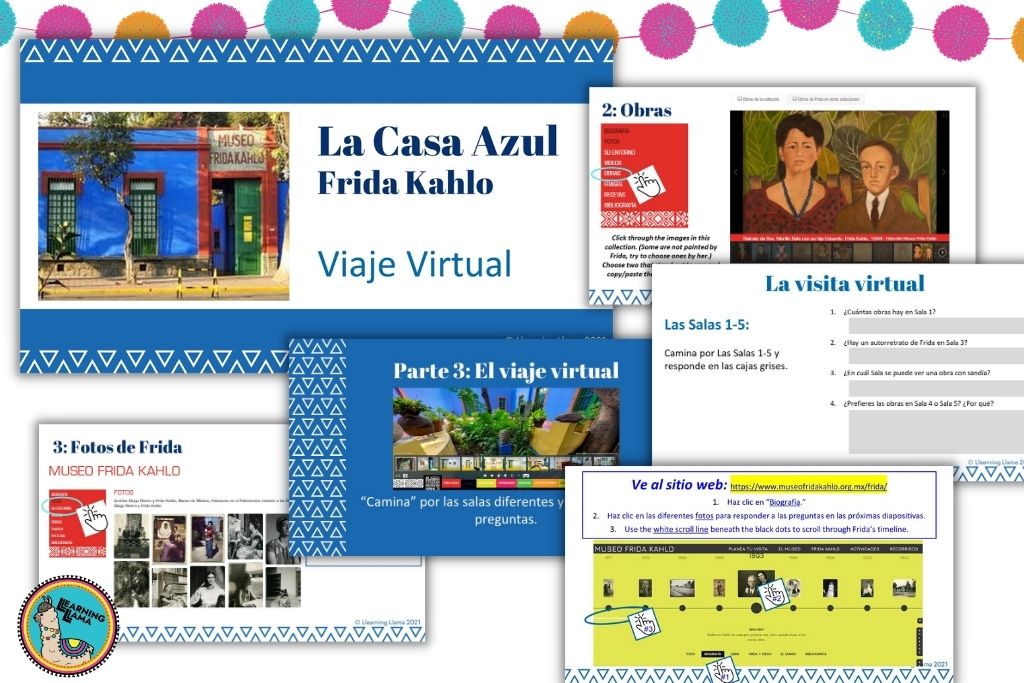
2. Pick Your Own Destination Field Trip
Student choice is very important, especially during projects. With this option, your students choose the country or attraction of their choice and report back to you. It is best to have some guidelines and even a sign-up sheet. This makes for a great sub plan or a project for the end of a travel unit!
I think having a common template is helpful, as it will guide all students to complete similar work, but based on areas of interest to them. Your template should include the requirements like how many stops on the itinerary, an area for pictures, written descriptions of the stops, lists of things they see, etc. Here is an interactive Google Slides template for any field trip.
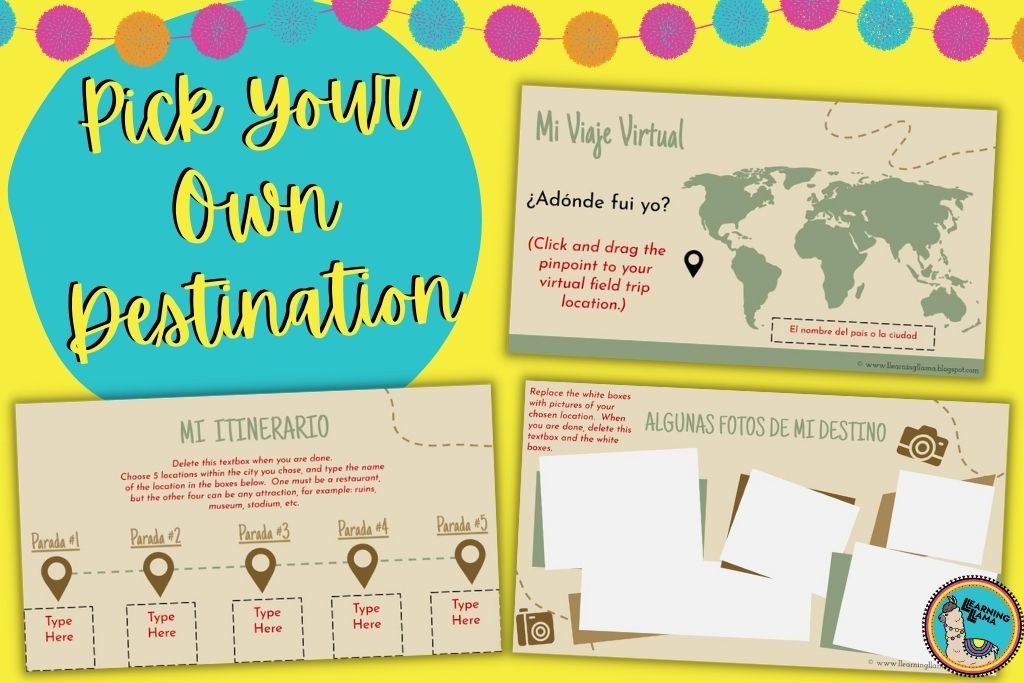
3. Online Scavenger Hunt
If you want your students to have more freedom, then send them on an online scavenger hunt. This option is oftentimes much less work for you, especially if you don’t provide the websites. You provide general questions… i.e. How much does it cost to enter the Prada museum? Where would you eat lunch after visiting the museum? What street is the museum on? These three questions would require students to determine which site to use… the museum site, Google Maps, Yelp, etc.
Here is another blog post with fun ideas for authentic scavenger hunts at zoos, museums, stadiums, etc.
And you can even use Scavenger Hunts for art units, as students dive deeper into the artwork, such as this Diego Rivera Pan American Unity digital scavenger hunt.
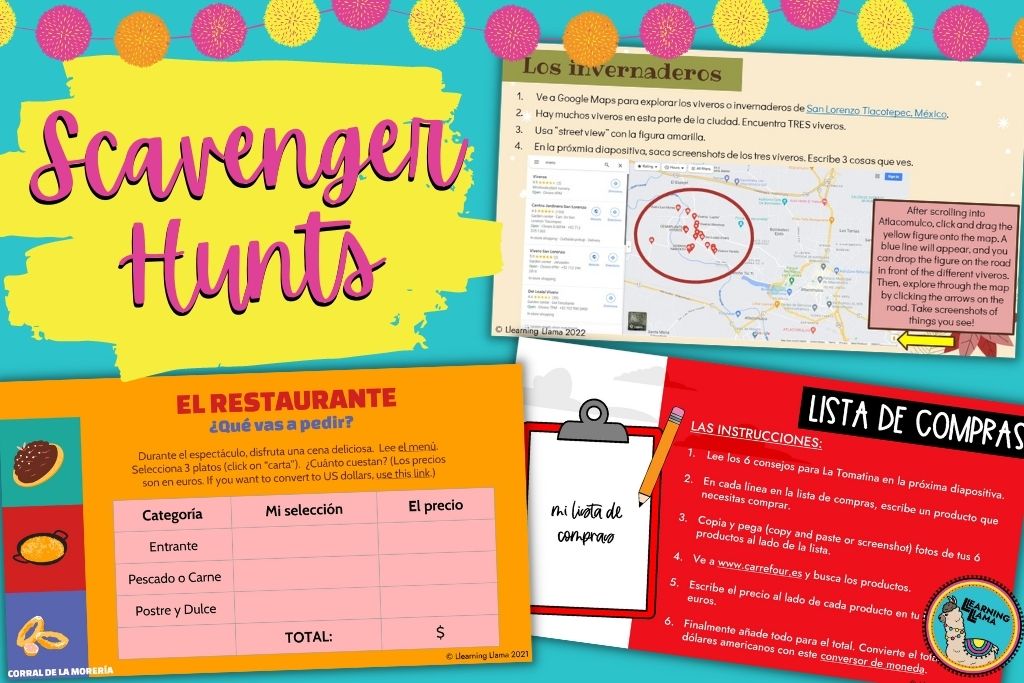
What field trips do you plan on taking your students to this year? I would love to hear more authentic ideas for virtual field trips in the world language classroom.






One Response